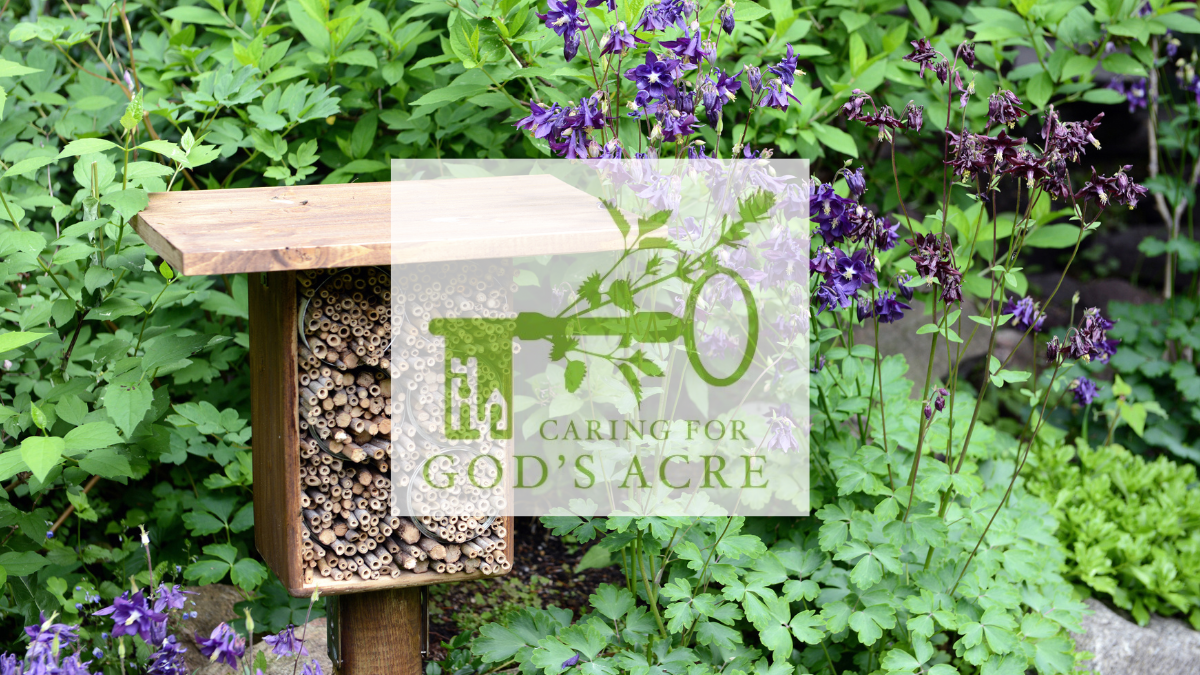
Solitary Bees
Did you know that there are about 270 species of bee in the UK of which 90% are ‘solitary bees’. They get this name as, unlike bumblebees and honeybees they do not live in complex colonies but nest individually, with the female laying one or a few eggs in a nest with a parcel of pollen and nectar to feed the young when they first hatch. Some of the more common types of solitary bees include Mason, Mining and Leafcutter Bees.
Mason Bees build nests out of mud or clay. Have a look on the sunny walls of your church or chapel and see if there are any little mounds of mud, these could be mason bee nests. Mining Bees, nest underground, digging tunnels to create their nests. Areas of short grass and bare ground are preferred by mining bees. Burial grounds often contain small patches of bare earth or cracks in the ground around monuments which can be great for them. Leafcutter Bees build a nest in a hole, crevice or hollow plant stem. They bite off circular pieces of leaf (particularly roses and bramble), which are then glued together using saliva to make a nest. Gaps between stones, old bits of wood and rough corners where dead stems are left will all be used by a variety of solitary bees.
Solitary bees are particularly important pollinators, perhaps because they lack pollen baskets on their legs so pollen both attaches and brushes off quite easily, spreading it around. Have a look for red mason bee which tends to use bee hotels, how about ashy mining bee which is striped black and white or the signs that leaf-cutter bees have been taking circles out of plant leaves.
You can help solitary bees by having a wide range of wildflowers and native grasses and a mosaic of short, long and tussocky grassland. How about a scruffy corner with some hogweed or bramble out of sight of the church entrance? This provides excellent nesting or overwintering cavities. People love to make bee hotels but don’t forget that how you manage your local churchyard has a big effect too. Why not take photos of any bees you see and upload them onto the iNaturalist app which will both help you identify them and also make a record so others can see what you’ve found.
All the best,
Diocesan Churchyard Environmental Advisor
www.caringforgodsacre.org.uk - individuals and groups in the diocese receive 20% members discount on all CfGA materials. Use the discount code diomem22
